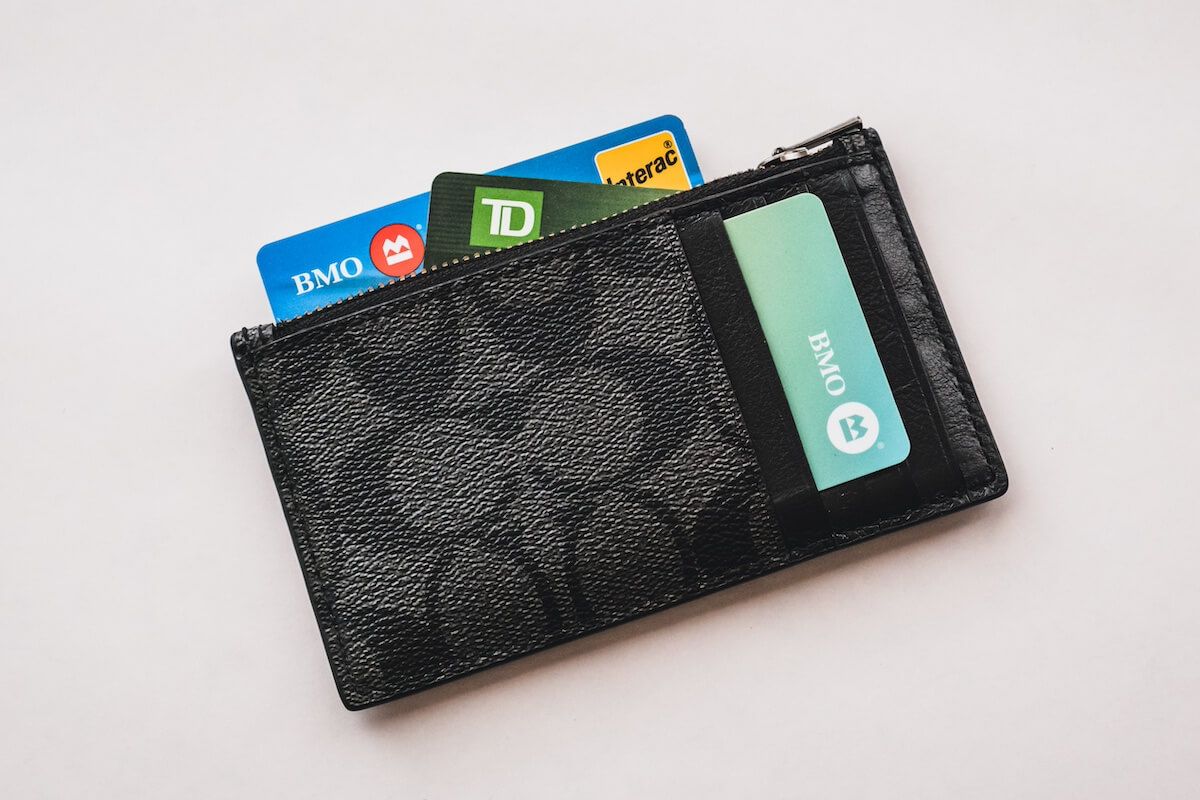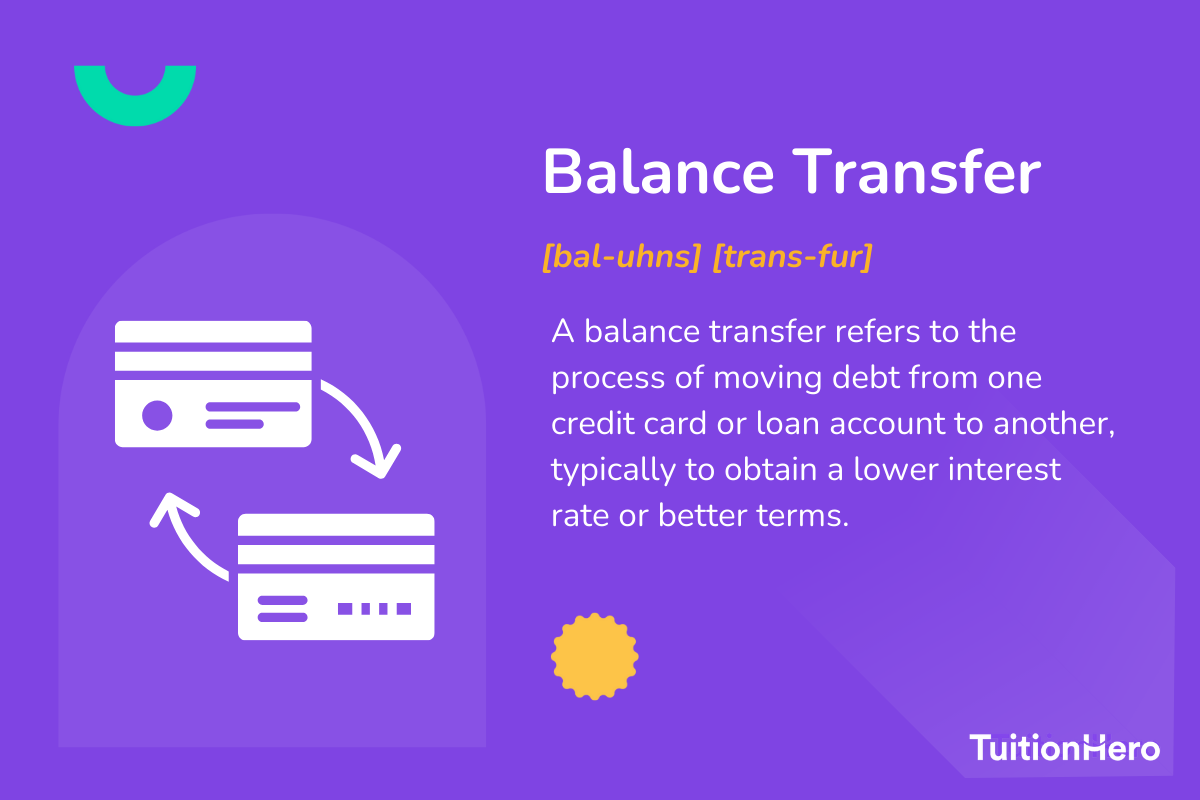Advertiser Disclosure
Last update: March 28, 2025
6 minutes read
What is a Balance Transfer? How to Lower Credit Card Debt in 2024
Learn about balance transfers to slash debt and boost savings. Discover how to consolidate debt, save money on interest, and take control of your finances today!

By Brian Flaherty, B.A. Economics
Edited by Rachel Lauren, B.A. in Business and Political Economy
Learn more about our editorial standards



By Brian Flaherty, B.A. Economics
Edited by Rachel Lauren, B.A. in Business and Political Economy
Learn more about our editorial standards
Credit card debt can be a heavy burden for college students, with tuition, textbooks, and living expenses piling up. Relying on credit cards to make ends meet makes managing this debt challenging. A balance transfer is a financial tool that lowers interest rates and speeds up debt repayment. Let’s explore whether it's the right choice for students by examining its pros and cons.

Key takeaways
- Balance transfers allow you to move debt from one card to another with a potentially lower interest rate
- They can provide big savings, especially if you use a 0% APR introductory offer
- It's essential to be aware of balance transfer fees and the potential for a temporary dip in your credit score
What is a balance transfer?
A balance transfer involves moving debt from one credit card to another, usually to take advantage of a lower interest rate. Here's how it typically works:
- You apply for a new credit card with a low introductory APR on balance transfers.
- If approved, you transfer your existing credit card balance to the new card.
- You pay off the transferred balance at a lower interest rate during the introductory period.
Some balance transfer offers may include rewards or cashback incentives, providing extra benefits if managed responsibly.

Why consider a balance transfer?
Many balance transfer cards offer a 0% APR for a limited time, often 12-18 months. This means every penny you pay goes toward reducing your principal balance, not interest.
Sounds great, right? But hold on – there's more to consider.
It's important to ensure that you can make consistent payments during the introductory period, as missing payments can void the 0% APR offer and lead to higher interest rates.
How can balance transfers benefit college students?
Balance transfers can help students with their finances in a few ways:
- Save money on interest
- Pay off debt faster
- Simplify payments by consolidating multiple balances
Did you know? If you transfer a $3,000 balance from a card with 18% APR to a 0% card and pay $250 monthly, you could save over $400 in interest and be debt-free in 12 months!
Moreover, reducing your interest payments allows more of your payments to go directly toward the principal, accelerating your journey to financial freedom.
What do students need to know about balance transfer fees and terms?
Here are some key pieces of information to know about balance transfer fees and terms.
Hidden costs
Most cards charge a fee of 3-5% of the transferred amount. On a $3,000 balance, that's $90-$150 right off the bat.
Some cards may offer promotional periods where balance transfer fees are reduced or waived entirely, so it's worth researching these options to minimize upfront costs.
Credit score requirements
Balance transfer cards often require good to excellent credit. As a student, you might not have had time to build a solid credit history yet.
Building your credit by maintaining low credit utilization and making timely payments can improve your chances of qualifying for favorable balance transfer offers in the future.
Intro period
Once the introductory period expires, the APR can skyrocket. If you haven't paid off the balance, you could end up right back where you started – or worse.
It's essential to set reminders for when the introductory period ends and to have a clear plan to either pay off the balance or explore other financial options by that time.
Compare private student loans now
TuitionHero simplifies your student loan decision, with multiple top loans side-by-side.
Compare Rates
When does a balance transfer make sense for students?
A balance transfer might be a good option if:
- You have high-interest credit card debt that'll take months to pay off
- You can qualify for a card with a long 0% intro period
- You have a solid plan to pay off the balance before the intro period ends
- The potential interest savings outweigh the transfer fee
- You’re disciplined enough to avoid accumulating new debt on your credit cards during the repayment period.
Alternative strategies to balance transfers for managing student credit card debt
Don't put all your eggs in the balance transfer basket. Consider these options too:
- Negotiate with your current card issuer for a lower rate
- Create a strict budget to accelerate debt payoff
- Look into student loan consolidation if you're juggling multiple loans
- Explore part-time job opportunities to boost your income

TuitionHero Tip
You're not just limited to credit card debt. Some issuers are flexible and let you shift other debts, like auto loans or personal loans, onto a credit card.
Dos and don'ts of doing a balance transfer
Thinking of executing a balance transfer? Here's a quick list of do’s and don'ts to guide your journey:
Dos
Calculate potential savings before applying
Read the fine print carefully
Create a repayment plan
Set up automatic payments to avoid missing due dates
Don'ts
Assume you'll automatically qualify
Forget about the balance transfer fee
Use the new card for additional purchases
Neglect your old card (keep it open for credit history)
How to execute a balance transfer step-by-step
If you've decided a balance transfer is right for you, here's how to do it:
- Research and compare balance transfer offers
- Apply for the card that best fits your needs
- Initiate the transfer (usually online or by phone)
- Confirm the transfer went through
- Start chipping away at that balance!
Also, let your old credit card issuer know about the balance transfer to make sure there are no misunderstandings, and keep track of all communications and confirmations during the process.
Remember, the goal is to pay off your debt, not just move it around. Stay focused and disciplined!

Why trust TuitionHero
Let's chat about TuitionHero. We specialize in Private Student Loans to help you cover college costs and offer refinancing options to save you money. We also provide great Credit Card Offers for post-balance transfer needs. Whether it's managing card debt, student loans, or easing your college financial burden, TuitionHero is here to help.
Frequently asked questions (FAQ)
While it's technically possible to transfer some types of student loan debt to a credit card, it's generally not recommended. You'll lose federal student loan protections and benefits, and the interest rate after the introductory period may be much higher than your original loan.
Instead, consider exploring student loan refinancing options or income-driven repayment plans to manage your debt more effectively.
A balance transfer can affect your credit score in several ways. Initially, applying for a new card may cause a slight dip due to the hard inquiry. However, if the transfer lowers your credit utilization ratio, it could boost your score in the long run. Keep in mind that opening a new account will lower your average account age, which is also a factor in credit scoring.
While there aren't many balance transfer cards marketed specifically to students, some student credit cards do offer balance transfer options. These may have more lenient credit requirements but might also have shorter introductory periods or higher fees. Always compare offers from multiple issuers and consider your ability to repay before applying.
It's generally advisable to keep your old credit card open, even after transferring the balance. Closing the account could hurt your credit score by reducing your available credit and potentially shortening your credit history. However, resist the temptation to start charging on the old card again, as this could lead to a cycle of increasing debt.
The time it takes to process a balance transfer can vary depending on the card issuer, but it typically takes 5-7 business days. Some transfers may be completed in as little as 24-48 hours, while others might take up to two weeks.
During this time, continue making payments on your old card to avoid late fees. Once the transfer is complete, confirm with both issuers that the balance has been moved and the old account shows a zero balance.
Final thoughts
Balance transfers can be a powerful tool for managing credit card debt, but they're not without risks. As a student, it's crucial to weigh the pros and cons carefully. If you decide to go for it, create a solid repayment plan and stick to it. Your future self (and wallet) will thank you!
Ready to crunch the numbers? Use a Balance Transfer Calculator to see how much you could potentially save!
Sources
- Do I pay interest on new purchases after I get a zero or low rate balance transfer?
- Credit cards key terms | Consumer Financial Protection Bureau
- Will paying off my credit card balance every month improve my credit score? | Consumer Financial Protection Bureau
- Take Charge of Your Credit Cards | FDIC
- Understanding Your Credit | Consumer Advice
- Credit reporting
Author

Brian Flaherty
Brian is a graduate of the University of Virginia where he earned a B.A. in Economics. After graduation, Brian spent four years working at a wealth management firm advising high-net-worth investors and institutions. During his time there, he passed the rigorous Series 65 exam and rose to a high-level strategy position.
Editor

Rachel Lauren
Rachel Lauren is the co-founder and COO of Debbie, a tech startup that offers an app to help people pay off their credit card debt for good through rewards and behavioral psychology. She was previously a venture capital investor at BDMI, as well as an equity research analyst at Credit Suisse.
At TuitionHero, we're not just passionate about our work - we take immense pride in it. Our dedicated team of writers diligently follows strict editorial standards, ensuring that every piece of content we publish is accurate, current, and highly valuable. We don't just strive for quality; we aim for excellence.
Related posts
While you're at it, here are some other college finance-related blog posts you might be interested in.
Shop and compare student financing options - 100% free!

Always free, always fast
TuitionHero is 100% free to use. Here, you can instantly view and compare multiple top lenders side-by-side.

Won’t affect credit score
Don’t worry – checking your rates with TuitionHero never impacts your credit score!

Safe and secure
We take your information's security seriously. We apply industry best practices to ensure your data is safe.
Finished scrolling? Start saving & find your private student loan rate today
Compare Personalized Rates


